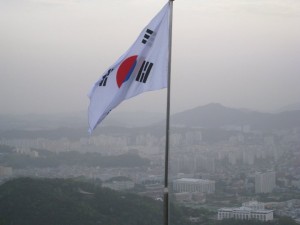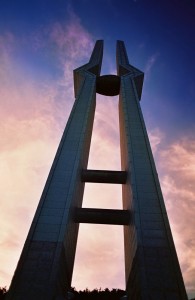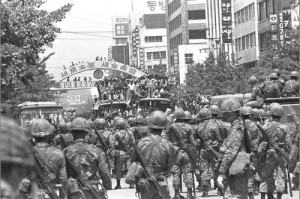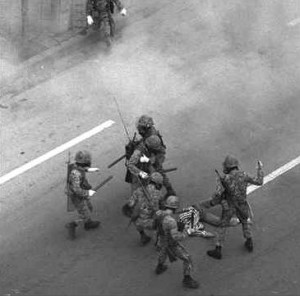Coming to Gwangju: The Road Less Traveled

I’m going to level with you from the outset: twelve months ago, I’d never even heard of Gwangju. My geographical knowledge of the peninsula was sketchy at best and I was as guilty as every other naval-gazing Westerner in assuming South Korea began and ended in Seoul. So I’ll forgive those of you who have yet to be awakened to the undoubted charms of this parochial southern city. A year down the line, my eyes are open. I’ve lived and breathed Gwangju for a month now and as the novelty wears off, it’s being replaced by something new: a warm, quiet air of contentment. Gwangju will never rival Seoul or Busan for variety of nightlife. Nor will it ever lay claim to being a truly international city. But it has charm in abundance, a rich and shocking history and a friendliness I’ve experienced nowhere else in the world.

Admittedly, I came to Gwangju on a whim. I could’ve gone to Seoul and had offers elsewhere, but on the limited information available to me, I plumped for this one. If, like mine was, your knowledge of the city is based solely on the obligatory Wikipedia article, forum posts and blog comments, you could be excused for thinking it was a rural backwater – an outpost of civilization housing hicks and rednecks. This notion was dispelled as soon as I rolled into the bus station. Perhaps it’s because I’m Irish (Dublin, our largest city, has a population of only one million), but to me, Gwangju is a huge city. With that comes the usual facilities, infrastructure and places to go. As with much of Korea, Gwangju looks as though it was dropped randomly to the earth, landing, as it is, in a huge ravine, flanked on each side by lush, green mountains.
For a budding hiker, Mudeung Mountain offers the greatest challenge. At over 1,200 feet, it’s one of the biggest summits in Jeollanam-do. The view from the top is spectacular and it’s worth setting a day aside to climb it. But you can’t help but feel you’ve cheated a little when greeted by a carpeted trail towards the top… perhaps it won’t appeal to the more intrepid climber, it’s not exactly off the beaten track. For added spice, try trekking up it in 85 degrees after a heavy night on the soju. Crash helmet, recommended.
A few years back, the Korean government afforded Gwangju the status “A Cultural Hub City of Asia”. Until 2023, they will pump about $1.8 billion into a project that is an attempt at rebalancing the culture of South Korea. Previously so much resource was ploughed into Seoul, with the rest of the country being left behind. Already the regeneration projects are visible. Some areas of the cities have been transformed. Gwangju is gradually being pulled into the 21st Century. Since the city’s nickname is The City Of Light, light is the loose theme of the project. The centerpiece of the project, a Forest of Light, looks stunning! The chances are I won’t be in Gwangju until 2023 and won’t reap most of the benefit. But the future looks bright for the culture of the city.

It’s another feather in the cap of the locals, who consider themselves to be pioneering in their beliefs and the guardians of Korean democracy. Last month (May 2010) was the thirtieth anniversary of the Gwangju Democratization Movement, a popular rebellion led by students in the city, which lasted for over a week and was protesting against the newly installed military government. The students took up arms and took over the city, bestowing civil rule upon it for days. Famously though, they were crushed by the Korean Army. The number of people killed is disputed, although people here confidently predict that it ran into the late hundreds. Some people are still unaccounted for, thirty years on. In fact, the uprising was billed as a Communist movement during the propaganda hit 1980s. But the past month has been an eye opener. The people of Gwangju are proud and they took the anniversary as an opportunity to celebrate and commemorate. There was music, speeches, dancing, drumming and plenty of drinking. The same streets that had been dashed with blood three decades ago were now streaming with soju, makgeolli and tears of the veterans.
One man who had been injured in the crushing of the rebellion was at pains to convey to me the depth of emotion the people felt. “Every time I look at this building,” he said pointing at a large, nondescript structure, “I remember that time. I have flashbacks and become frightened.” His tale is common here. The celebratory efforts and mood is admirable, coming from a nation of civil unrest I can empathize. The character and steely determination of the Gwangju people is palpable. The city’s makeover will give their home a shiny new face, but the locals are certain that it won’t banish the ghosts of thirty years ago. They won’t allow that to happen.

After only one month in Gwangju, I have learned a lot about Korean people, with the anniversary acting as a window to their souls. The city courts modernity whilst having its roots firmly based in tradition. This hybrid, I feel, is an excellent model in learning about Koreans and their culture. Come see it for yourselves.

1 comment:
really interesting Finbarr, glad you're having a time over there
Post a Comment